Table of Contents
Vertical farming refers to the practice of cultivating plants in vertically stacked layers, utilizing controlled environments such as buildings or warehouses. Hydroponics, on the other hand, is a soilless cultivation method that uses nutrient-rich water solutions to nourish plants.
In traditional agriculture, land availability is a limiting factor for increasing food production. Maximizing space efficiency in agriculture is crucial to meet the demands of a growing global population while minimizing land usage. Vertical farming offers a solution by utilizing vertical space to increase crop production.
This blog aims to explore the concept of vertical farming and its potential to maximize space efficiency. It will delve into the benefits of vertical farming systems, the various types of systems, strategies for optimizing space, challenges faced, and the role of hydroponics in overcoming those challenges. Finally, it will discuss future prospects and advancements in vertical farming.
The Potential of Vertical Farming
Definition of vertical farming
It is a revolutionary agricultural approach that involves the cultivation of crops in vertically stacked layers or towers, typically within controlled indoor environments. Unlike traditional farming, which relies on vast expanses of land, vertical gardening/farming maximizes space utilization by growing plants upward. This innovative method utilizes advanced technologies such as artificial lighting, climate control systems, and hydroponics or other soilless cultivation techniques to create optimal growing conditions.
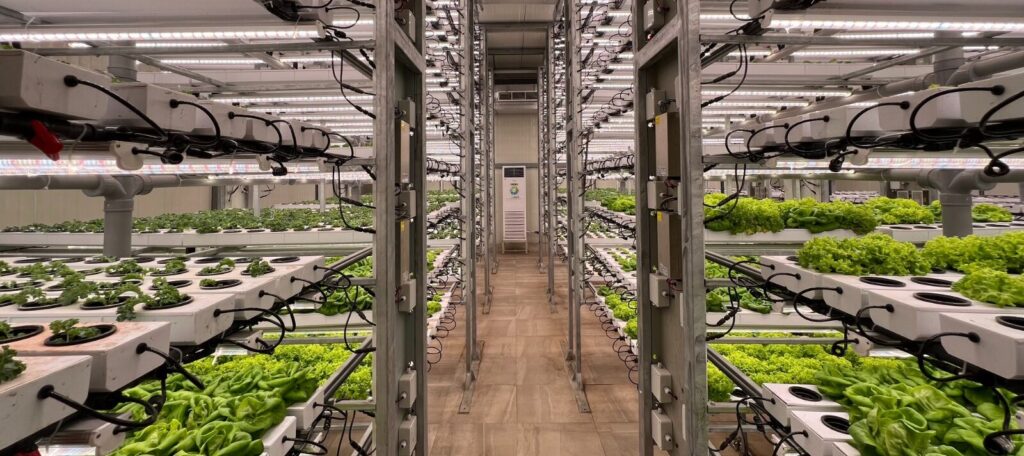
Basic principles of vertical farming
The principles that underpin vertical farming systems are designed to maximize productivity, efficiency, and sustainability. These principles include:
- Controlled Environments: Precise control of temperature, humidity, light, and nutrients for year-round crop production.
- Efficient Lighting Systems: High-intensity LED lights provide optimal spectrum and intensity for plant growth.
- Precise Climate Control: Regulating temperature, humidity, and airflow to create ideal growing conditions.
- Soilless Cultivation: Hydroponics or aeroponics deliver nutrient-rich water solutions directly to plant roots.
- Vertical Space Utilization: Stacking plants in layers maximizes crop production per square meter.
The potential of vertical gardening extends to various areas, including:
- Food Security: Year-round cultivation, independent of weather, reduces reliance on seasonal harvests and imports.
- Resource Conservation: Optimizes land use, minimizes water usage, and reduces chemical pesticide/herbicide reliance.
- Climate Resilience: Stable environments protect crops from adverse weather, pests, and diseases.
- Urban Agriculture: Utilizes vertical space in urban areas, reducing transportation distances and promoting local food production.
- Sustainable Development: Reduces land degradation, conserves water resources, and minimizes synthetic chemical use.
Discussion of the Benefits of Vertical Gardening/Farming Systems
Sustainable food production for a growing global population
Vertical gardening presents a sustainable solution to feed the growing global population. By utilizing vertical space, it maximizes crop production per square meter, reducing the need for vast expanses of land.
Land restoration and ecosystem conservation
Vertical gardening reduces the pressure on natural ecosystems by minimizing land use. This approach helps to preserve biodiversity and protect valuable natural habitats, promoting land restoration efforts.
Energy production and waste management
Some vertical gardening systems integrate renewable energy sources, such as solar panels or wind turbines, to generate power. Additionally, waste generated from vertical farms can be used for energy production through anaerobic digestion or composting, contributing to a circular economy.
Conservation of drinking water
Vertical farming systems employ recirculating hydroponic systems that use significantly less water compared to traditional farming methods. Water is efficiently recycled within the closed-loop system, minimizing water waste and conserving this precious resource.
Utilization of urban spaces
Urban areas often face limited access to fresh produce. Vertical farming allows for the utilization of vacant urban spaces, such as rooftops or disused buildings, to grow crops closer to the point of consumption, reducing transportation distances and carbon emissions.
Disease Prevention and Public Health
Vertical gardening provides a controlled and sterile environment, reducing the risk of crop diseases. By eliminating the need for chemical pesticides, it promotes healthier food production and contributes to public health.
Year-round food production
Vertical farming is not subject to seasonal limitations, enabling year-round production regardless of external weather conditions. This consistency in crop production helps stabilize food supplies and reduce the dependence on imports.
Reduction in pesticide and herbicide use
Vertical farming systems minimize or eliminate the need for chemical pesticides and herbicides, thereby reducing the negative environmental impacts associated with their use. This contributes to safer and more sustainable food production.
Role of agrochemical industries
Agrochemical industries play a vital role in supporting vertical gardening systems by developing specialized fertilizers, nutrients, and plant growth regulators. These innovations help optimize plant growth and ensure the success of vertical farming operations.
Promotion of sustainable urban life and well-being
Vertical farming encourages sustainable urban living by providing access to fresh, locally-grown produce. It fosters community engagement, promotes education about food systems, and enhances the well-being of urban dwellers.
Types of Vertical Farming Systems
Tower systems

Tower systems are one of the most common types of vertical gardening setups. These systems consist of multiple stacked layers or towers, with each tower housing numerous planting pockets or trays. Plants are grown vertically within these pockets, utilizing the available space efficiently. Tower systems are particularly suitable for smaller plants with shallow root systems, such as leafy greens and herbs. They offer excellent accessibility and facilitate easy monitoring and maintenance.
Rack systems
Rack systems involve the use of vertical racks with adjustable shelves. These systems provide a versatile framework for growing plants in a vertical arrangement. The shelves can be customized to accommodate different plant heights and growth stages. Rack systems offer flexibility in terms of crop selection and allow for efficient space utilization. They are well-suited for growing a variety of plants, including leafy greens, vine crops, and even taller plants such as tomatoes or strawberries.
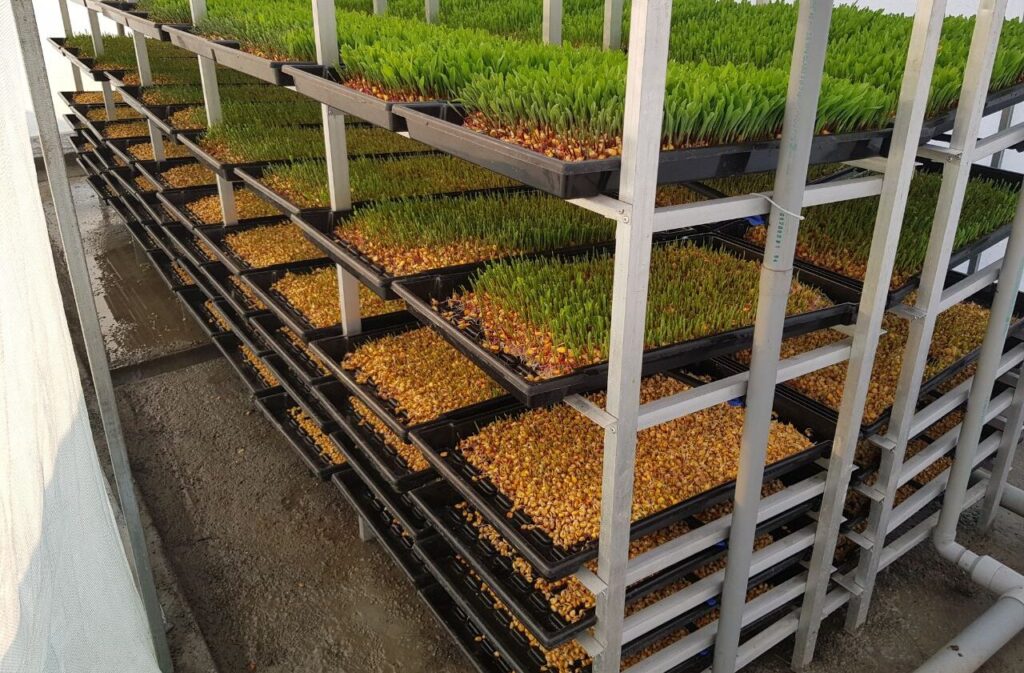
Wall-mounted systems

Wall-mounted systems are designed to optimize vertical space by affixing plant modules directly to walls. These systems are particularly suitable for indoor environments, such as warehouses or urban buildings. Wall-mounted systems can utilize hydroponics or other soilless cultivation techniques. They offer advantages in terms of space efficiency and aesthetics, as the plants become an integral part of the vertical structure. These systems are often used to grow herbs, lettuce, or ornamental plants.
Maximizing Space Efficiency in Vertical Farming
Importance of space efficiency in urban areas
In urban areas where land is scarce, space efficiency is crucial for vertical gardening to be economically viable. Maximizing space utilization allows for higher crop yields, profitability, and sustainable food production.
Strategies for optimizing space in vertical farming systems
Vertical stacking
Vertical stacking involves arranging plant modules or shelves in a compact, layered manner to make efficient use of vertical space. This technique increases the overall planting capacity within a limited footprint.
Utilizing vertical space for lighting and irrigation systems
Vertical gardening systems can incorporate lighting and irrigation systems that are suspended from the ceiling or integrated into vertical structures. By utilizing the vertical space for these essential components, the overall footprint is further reduced.
Incorporating multi-tiered structures
Multi-tiered structures, such as multi-level shelves or racks, allow for the simultaneous cultivation of crops at different heights. This approach maximizes space utilization while providing optimal lighting and climate conditions for each crop.
Automation and robotics
Automation and robotics play a crucial role in maximizing space efficiency by optimizing workflows and reducing labor requirements. Automated systems can efficiently perform tasks such as seeding, transplanting, harvesting, and data collection, enabling streamlined operations within a confined space.
Crop selection and rotation
Careful selection of crops and implementing rotation practices can enhance space efficiency. Choosing crops with varying growth cycles and growth habits allows for efficient use of vertical space while maintaining continuous production throughout the year.
Smart monitoring and control systems
Implementing smart monitoring and control systems enables precise monitoring of environmental factors such as temperature, humidity, and nutrient levels. By maintaining optimal growing conditions, these systems ensure maximum space efficiency and crop productivity.
Challenges and Limitations of Vertical Farming Systems
High initial investment costs
One of the primary challenges of vertical farming is the high initial investment required to set up the infrastructure, including lighting systems, climate control, and automation equipment. However, advancements in technology and economies of scale are gradually reducing these costs.
Energy consumption
Vertical gardening systems rely on artificial lighting and climate control systems, resulting in higher energy consumption compared to traditional agriculture. The integration of energy-efficient technologies and renewable energy sources can help mitigate this challenge.
Technical challenges and system complexity
Vertical farming systems involve sophisticated technology and require expertise in areas such as hydroponics, lighting, and automation. The complexity of these systems poses challenges in terms of design, maintenance, and troubleshooting.
Limited crop variety
Not all crops are suitable for vertical farming due to their size, growth habits, or nutritional requirements. Leafy greens and herbs are commonly grown in vertical farms, while larger fruits or root vegetables may be challenging to cultivate in limited space.
Regulatory and zoning issues
Vertical gardening may face regulatory challenges related to zoning, building codes, and food safety regulations. Clear guidelines and supportive policies are necessary to facilitate the integration of vertical gardening into urban environments.
Overcoming Challenges in Vertical Farming with Hydroponics
High startup costs and specialized equipment requirements
Hydroponics, as a soilless cultivation method, can help overcome the challenges associated with soil-based agriculture. Although hydroponic systems may require initial investment, they provide precise control over nutrient delivery and water usage, leading to increased space efficiency and crop yields.
Energy consumption and carbon emissions
Hydroponic systems can be optimized to reduce energy consumption by utilizing energy-efficient lighting systems, implementing smart automation, and integrating renewable energy sources. This helps minimize the carbon footprint associated with vertical farming operations.
Water management and scarcity
Hydroponics excels in water management by utilizing recirculating systems that require significantly less water compared to traditional farming. Additionally, advanced water treatment and filtration technologies can be employed to conserve water and ensure its optimal use.
Maintenance and operational considerations
Hydroponic systems require regular maintenance to ensure proper functioning and prevent issues such as nutrient imbalances or disease outbreaks. Adequate training, monitoring systems, and routine maintenance protocols are essential for the smooth operation of hydroponic vertical farms.
Future Prospects and Conclusion
The future of vertical gardening holds promising advancements. Integration with emerging technologies such as automation, artificial intelligence (AI), and data analytics will further optimize space efficiency, resource utilization, and crop productivity.
Automation and AI can enhance operational efficiency by enabling real-time monitoring, predictive analytics, and precise control over environmental conditions. These technologies can automate labour-intensive tasks and contribute to the continuous improvement of vertical farming systems.
Vertical farming and hydroponics offer innovative solutions to the challenges faced by traditional agriculture. As technology advances, the scalability, sustainability, and economic viability of vertical farming will continue to improve, paving the way for a more efficient and resilient food production system.
In conclusion, vertical gardening systems have the potential to revolutionize agriculture by maximizing space efficiency and addressing the pressing challenges of food security, resource conservation, and urban sustainability. By embracing the benefits of vertical farming and overcoming its limitations, we can create a more sustainable and resilient future for agriculture.
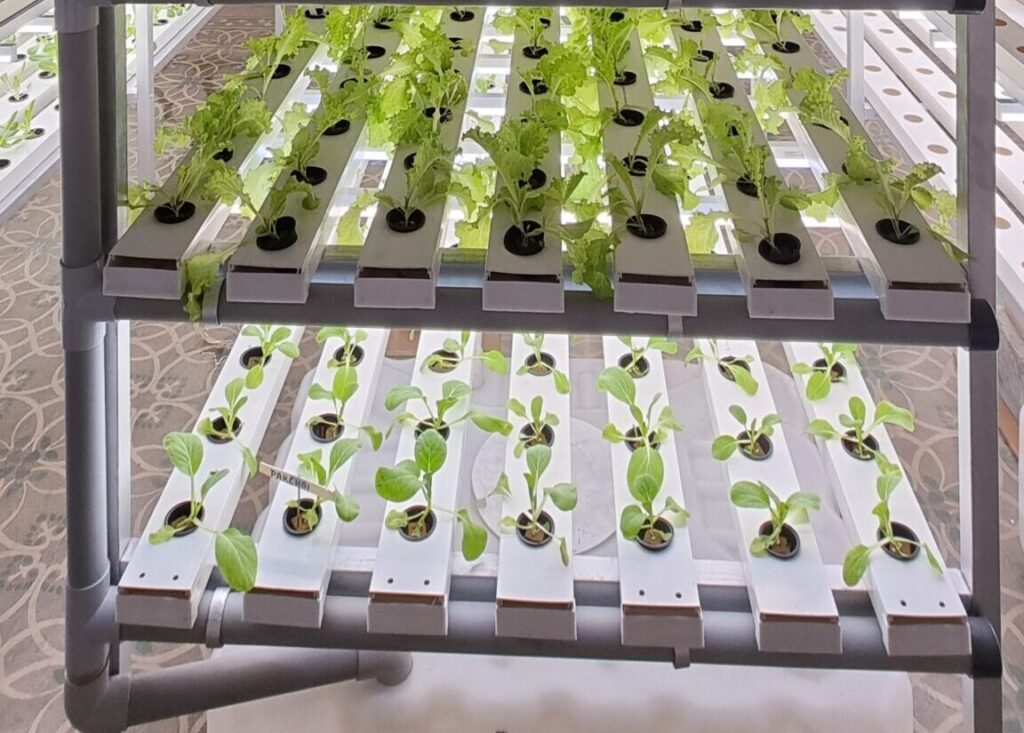
FAQ (Frequently Asked Questions)
1. Is vertical farming only suitable for certain types of crops?
Vertical farming can accommodate a wide variety of crops, including leafy greens, herbs, microgreens, strawberries, and even certain root vegetables. However, crops with extensive root systems or those that require substantial space to grow, such as large fruit trees or corn, may not be as suitable for vertical farming due to space limitations. The choice of crops in vertical farming depends on factors such as plant size, growth requirements, and the specific vertical farming system being used.
2. Can vertical farming be integrated with renewable energy sources?
Yes, vertical farming can be integrated with renewable energy sources to reduce its carbon footprint. Solar panels can be installed on the roofs or walls of vertical gardening structures to generate clean energy for powering lighting systems, climate control, and other energy-intensive operations. Additionally, wind turbines or geothermal energy systems can be harnessed to provide sustainable power sources. The integration of renewable energy in vertical farming helps minimize reliance on non-renewable energy sources and further enhances its environmental sustainability.
3. Can vertical farming be economically viable compared to traditional farming methods?
The economic viability of vertical farming depends on various factors, including initial setup costs, operational expenses, crop selection, market demand, and local economic conditions. While vertical farming may have higher initial investment costs due to infrastructure and technology requirements, it can offer advantages such as higher crop yields, reduced land usage, and year-round production. Additionally, vertical farming’s proximity to urban areas can reduce transportation costs and create opportunities for premium pricing in local markets. With advancements in technology, economies of scale, and efficient management, vertical gardening has the potential to become economically competitive and sustainable.
4. How does vertical gardening contribute to sustainable urban development?
Vertical gardening offers numerous benefits for sustainable urban development. Utilizing vertical space within urban areas, it reduces the need for extensive land use and transportation of produce from rural areas. This promotes local food production, reduces food miles, and minimizes carbon emissions associated with long-distance food transportation. Additionally, vertical farming can repurpose underutilized urban spaces, such as warehouses or disused buildings, transforming them into productive agricultural areas and contributing to the revitalization of urban environments.
5. What role does technology play in vertical farming systems?
Technology plays a critical role in vertical farming systems. Advanced climate control systems, artificial lighting, sensors, and automation technologies are employed to create optimal growing conditions and maximize resource efficiency. These technologies allow precise control over factors such as temperature, humidity, lighting, and nutrient delivery, ensuring optimal plant growth and productivity. Additionally, data-driven monitoring and control systems enable real-time adjustments and remote management of vertical farms, enhancing efficiency, productivity, and sustainability.
6. Can vertical farming help mitigate the impacts of climate change on agriculture?
Vertical farming has the potential to mitigate the impacts of climate change on agriculture. With controlled environments, vertical farms are less susceptible to extreme weather events, pests, and diseases that can harm traditional outdoor crops. By reducing reliance on traditional farming methods that are vulnerable to climate disruptions, vertical farming offers a more resilient approach to food production. Moreover, vertical farming can be designed to operate with reduced carbon emissions, utilizing renewable energy sources and optimizing resource efficiency, thus contributing to climate change mitigation efforts.

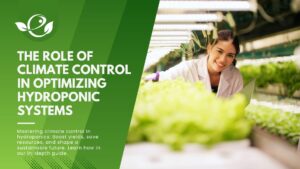
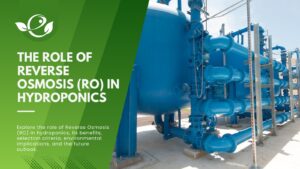



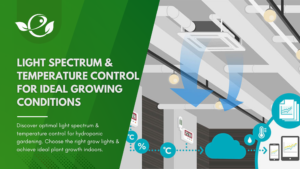

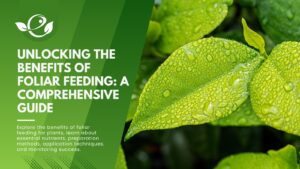
This Post Has One Comment
नुट्रेट के नाम और उसका प्रमाण भेजे